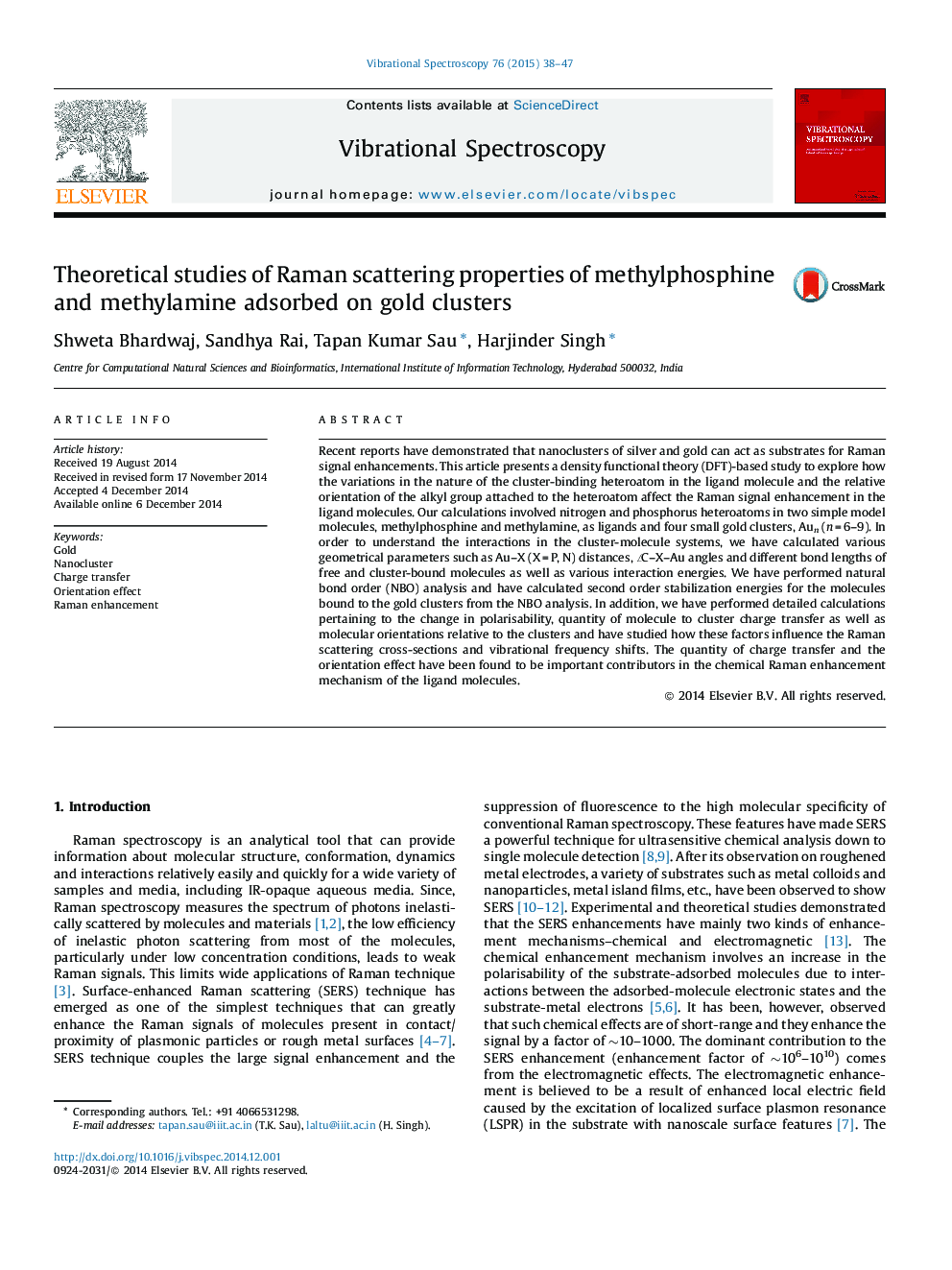| Article ID | Journal | Published Year | Pages | File Type |
|---|---|---|---|---|
| 1250302 | Vibrational Spectroscopy | 2015 | 10 Pages |
Recent reports have demonstrated that nanoclusters of silver and gold can act as substrates for Raman signal enhancements. This article presents a density functional theory (DFT)-based study to explore how the variations in the nature of the cluster-binding heteroatom in the ligand molecule and the relative orientation of the alkyl group attached to the heteroatom affect the Raman signal enhancement in the ligand molecules. Our calculations involved nitrogen and phosphorus heteroatoms in two simple model molecules, methylphosphine and methylamine, as ligands and four small gold clusters, Aun (n = 6–9). In order to understand the interactions in the cluster-molecule systems, we have calculated various geometrical parameters such as Au–X (X = P, N) distances, ∠C–X–Au angles and different bond lengths of free and cluster-bound molecules as well as various interaction energies. We have performed natural bond order (NBO) analysis and have calculated second order stabilization energies for the molecules bound to the gold clusters from the NBO analysis. In addition, we have performed detailed calculations pertaining to the change in polarisability, quantity of molecule to cluster charge transfer as well as molecular orientations relative to the clusters and have studied how these factors influence the Raman scattering cross-sections and vibrational frequency shifts. The quantity of charge transfer and the orientation effect have been found to be important contributors in the chemical Raman enhancement mechanism of the ligand molecules.
